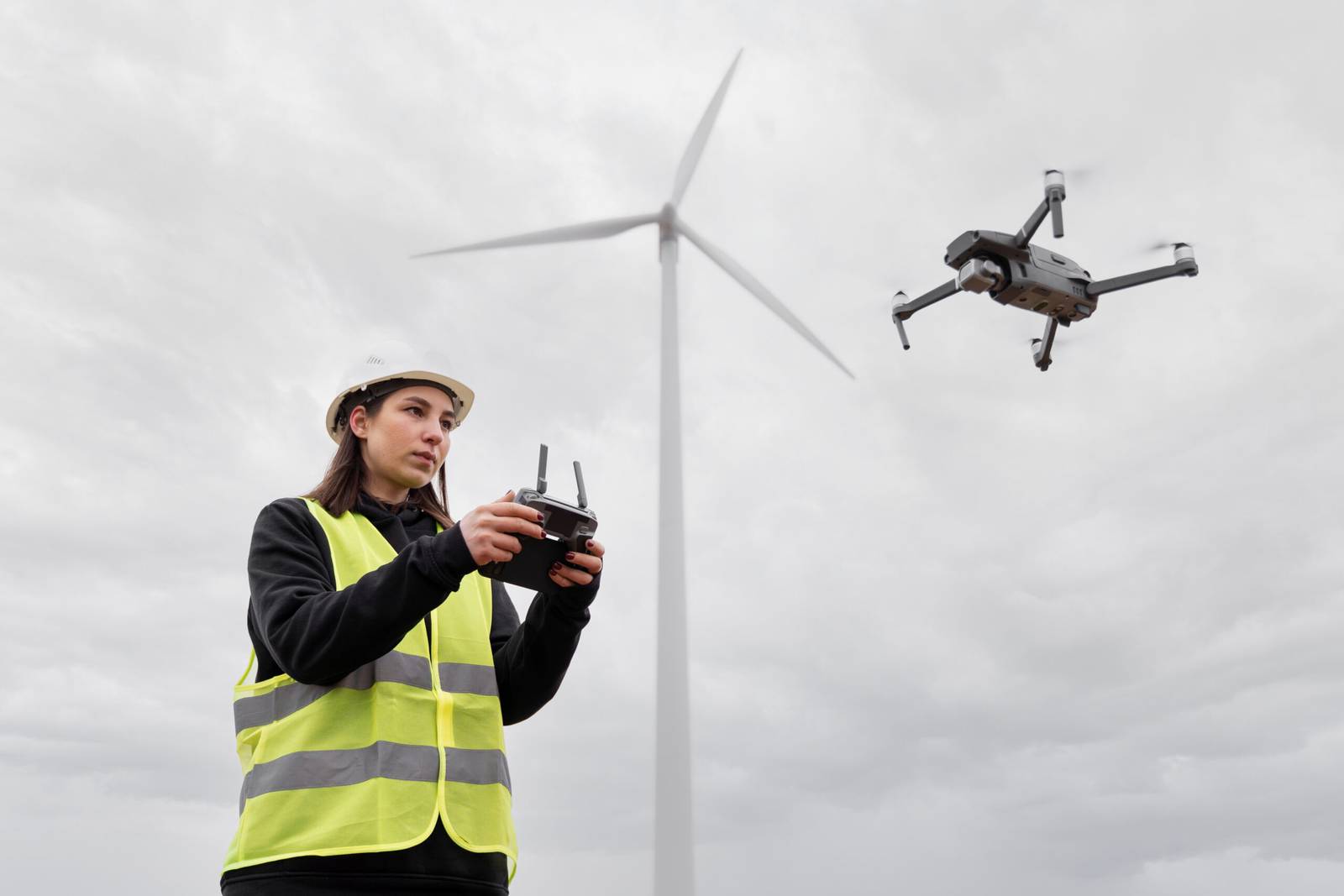Drones in Industry: From Delivery to Surveillance

by Web Digital
Unmanned aerial vehicles, commonly known as drones, have rapidly transformed from military tools into versatile assets across a range of industries. While they were initially developed for military purposes. Their potential for commercial applications became evident, leading to a proliferation of drone technology across various sectors. This article delves into the multifaceted role of drones in industry, from the futuristic concept of drone deliveries to their critical role in surveillance and data collection.
Drones in Delivery
One of the most intriguing and widely publicized applications of drones in recent years has been their potential to revolutionize the delivery industry. Companies like Amazon, UPS, and DHL have been experimenting with drone delivery services. Aiming to make the shipment of packages faster, more efficient, and environmentally friendly. The key technologies and considerations in this realm are as follows:
Autonomous Navigation: Drones used for deliveries are equipped with advanced GPS systems and collision-avoidance technology to navigate and land safely. They can identify obstacles and change their flight path in real time, ensuring secure delivery.
Payload Capacity: Drones have varying payload capacities, which determine the size and weight of packages they can transport. These capabilities are improving, allowing for more versatile use in the delivery industry.
Regulatory Challenges: The widespread adoption of delivery drones faces challenges related to regulations, airspace management, and safety concerns. Collaborations between companies and regulatory bodies are vital to overcome these hurdles.
Last-Mile Delivery: Drones are especially beneficial for last-mile deliveries, where traditional transportation methods are often inefficient.
Environmental Benefits: Drones offer eco-friendly delivery solutions. Emitting fewer greenhouse gases compared to traditional delivery vehicles, reducing the carbon footprint of logistics operations.
Drones in Agriculture
The agricultural industry has embraced drone technology to enhance crop management and improve overall efficiency. Agricultural drones, often equipped with high-resolution cameras and other sensors, are used for various purposes:
Crop Monitoring: Drones equipped with multispectral cameras can capture images of crops in different wavelengths. providing valuable insights into crop health and identifying potential issues such as diseases or pests.
Precision Agriculture: Drones enable farmers to apply fertilizers, pesticides, and water more efficiently. By analyzing data collected by drones, farmers can make data-driven decisions to optimize crop yields.
Irrigation Management: Drones equipped with thermal imaging cameras can detect variations in soil moisture levels, helping farmers identify areas in need of irrigation.
Crop Spraying: Some drones are designed for the precision spraying of fertilizers or pesticides, reducing the need for manual labour and minimizing chemical use.
Soil Analysis: Drones can collect soil samples and analyze them to assess soil quality. Which aids in determining suitable crop types and planting strategies.
Drones in Surveillance and Security
The use of drones for surveillance and security applications has grown exponentially. Various industries, from law enforcement and border control to infrastructure protection and disaster response. Rely on drone technology for enhanced situational awareness and rapid response:
Law Enforcement: Drones are used in search and rescue operations, monitoring public events, and assisting in criminal investigations. They provide an aerial view that helps law enforcement agencies make informed decisions.
Border Security: Drones are instrumental in border surveillance. Enabling authorities to monitor vast and remote areas. Detect illegal crossings, and respond swiftly to potential threats.
Infrastructure Inspection: Drones are deployed to inspect critical infrastructure, such as bridges, pipelines, and power lines. They provide close-up views and collect data that helps in identifying maintenance needs.
Disaster Response: Drones are crucial in disaster management. They can quickly assess damage, search for survivors, and relay information to emergency responders, improving the effectiveness of relief efforts.
Privacy Concerns: The use of surveillance drones has raised privacy concerns and led to debates over regulations.
Challenges and Considerations
While drones have proven their utility in various industries. Several challenges and considerations must be addressed for their continued growth and responsible use:
Regulations: Drones are subject to strict regulations in most countries, governing aspects like flight altitude, no-fly zones, and licensing requirements. Adherence to these rules is crucial to ensure safe and legal drone operations.
Airspace Management: Ensuring that drones can coexist with manned aircraft in shared airspace is a complex challenge that requires advanced air traffic management systems and technologies.
Data Security: Drones often collect sensitive data. Safeguarding this data from unauthorized access and cyber threats is a significant concern, especially in surveillance and data collection applications.
Battery Life and Range: Drone battery technology and flight range limitations can restrict their operational efficiency. Continued advancements in battery life and energy efficiency are essential.
Public Perception: The public’s perception of drones varies, with concerns about privacy, safety, and noise. Effective communication and transparency by drone operators are crucial for addressing these concerns.
Cost and ROI: The cost of acquiring and operating drones can be substantial. Ensuring a positive return on investment is a key consideration for businesses looking to adopt drone technology.
Conclusion
Drones have transcended their military origins to become indispensable tools in a wide range of industries. From delivery services and agriculture to surveillance and security, their versatile capabilities continue to evolve. However, the successful integration of drones into these industries hinges on overcoming regulatory challenges. Addressing privacy concerns, and ensuring responsible and ethical use. As technology continues to advance. The potential applications of drones in the industry are only set to expand, offering innovative solutions and improving operational efficiency across various sectors.
Recommended Posts

The Best Email Marketing Platforms for Canadian Users
September 27, 2025

How to Use Google Business Profile for Local SEO
September 26, 2025

Website Maintenance Checklist for Canadian Small Businesses
September 26, 2025
